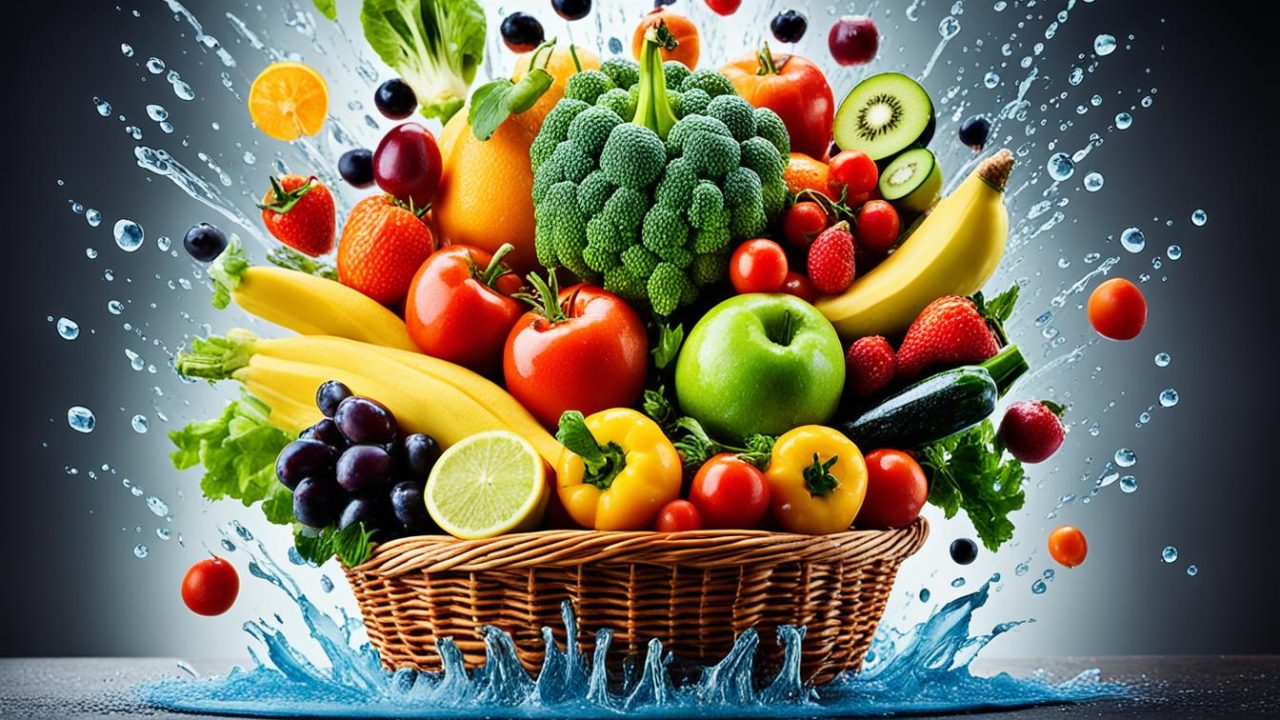Welcome to our exploration of the vibrant and diverse world of Korean cuisine. In this article, we will guide you through the top 10 Korean dishes that you must try to satisfy your culinary cravings. From rich and savory flavors to spicy and tangy delights, Korean food offers a delightful gastronomic adventure that is sure to captivate your taste buds.
As one of the most popular cuisines in the world, Korean food embodies a harmonious blend of tradition and innovation. With its emphasis on fresh ingredients, balance, and unique cooking techniques, Korean cuisine has gained a dedicated following worldwide.
Get ready to tantalize your senses as we take you on a journey through the rich flavors of Korea. From traditional favorites that have stood the test of time to modern fusion dishes that push culinary boundaries, there is something for every food lover to enjoy.
So make yourself comfortable and prepare to indulge in the wonders of Korean cuisine. Let’s dive into the world of top Korean dishes and embark on a culinary adventure like no other.
Traditional Korean Food: Exploring Time-Honored Flavors
In this section, we invite you to embark on a culinary journey through the world of traditional Korean food. From the bustling street markets of Seoul to the humble homes of rural Korea, these timeless dishes have been passed down through generations, each one telling a story of heritage and tradition.
One iconic dish that embodies the essence of traditional Korean cuisine is Bibimbap. Literally meaning “mixed rice,” Bibimbap consists of a colorful medley of vegetables, meat, and a fried egg, all beautifully arranged on top of a bed of rice. The dish is not only a feast for the eyes but also a harmonious blend of flavors and textures.
No exploration of Korean food would be complete without mentioning Kimchi, a staple in Korean households. Made from fermented cabbage and an array of spices, this tangy and spicy side dish is a celebration of flavor and preservation techniques that have been perfected over centuries.
Another must-try classic is Bulgogi, thinly sliced beef marinated in a delectable blend of soy sauce, garlic, and other seasonings. The meat is then grilled to perfection, resulting in tender and succulent bites bursting with umami.
These traditional Korean dishes not only satisfy the taste buds but also provide a deep connection to Korean culture and heritage. Passed down from generation to generation, they represent the enduring traditions and unwavering pride of the Korean people.
Modern Korean Fusion: Exciting Culinary Innovations
Korean cuisine has always been known for its bold flavors and diverse range of dishes. In recent years, it has also embraced the concept of fusion cuisine, combining traditional Korean flavors with techniques and ingredients from around the world. This modern approach to Korean food has given rise to a new wave of creative and innovative dishes that are captivating the hearts and palates of both locals and international food enthusiasts.
One of the hallmarks of modern Korean fusion cuisine is the creative use of ingredients and cooking methods. Chefs are incorporating global influences to create dishes that are both visually stunning and irresistibly delicious. From Korean tacos with savory bulgogi and tangy kimchi to Korean fried chicken with a crispy exterior and a spicy-sweet glaze, these modern Korean dishes are reimagining traditional favorites in exciting new ways.

What sets these modern Korean fusion dishes apart is the balance they strike between honoring tradition and embracing innovation. While the flavors may push boundaries, the essence of Korean cuisine remains at the core. There is a deep respect for the rich culinary heritage of Korea, and each dish showcases a careful blend of traditional spices, techniques, and ingredients.
Whether you’re a fan of traditional Korean cuisine or simply a lover of creative and adventurous food, these modern Korean fusion dishes are sure to leave a lasting impression. They represent the evolution of Korean cuisine and the boundless creativity of Korean chefs. So, step into the world of modern Korean fusion and embark on a culinary journey that combines the best of tradition and innovation.
Unique Regional Specialties: Tastes from Every Corner
Korea is known for its diverse and vibrant culinary scene, offering a wide array of flavors and dishes to tantalize your taste buds. From the bustling streets of Seoul to the tranquil countryside, each region in Korea boasts its own unique regional specialties that showcase the distinct flavors and techniques of that area. Let’s take a journey through Korea’s regional cuisines and discover the hidden gems that await.

One such regional specialty is Andong Jjimdak, a dish that originated in the city of Andong in Gyeongsangbuk-do province. This hearty and spicy chicken dish is simmered in a soy-based sauce with various vegetables and served hot. With its bold flavors and satisfying textures, Andong Jjimdak is a must-try for those looking to explore the regional Korean dishes.
For seafood enthusiasts, Jeju Island offers a bounty of fresh and delicious seafood delights. Known as the “Hawaii of Korea,” Jeju Island is surrounded by pristine waters, making it the perfect place to indulge in various seafood dishes. From succulent abalone to mouthwatering sashimi, Jeju Island’s seafood specialties are a true treat for the senses.
In Jeolla Province, located in the southwestern part of Korea, you’ll find a wide range of hearty and comforting dishes. Jeolla cuisine is known for its rich flavors and generous use of ingredients. One of the most famous dishes from this region is Jeonju Bibimbap, a bowl of mixed rice topped with colorful vegetables, meat, and a flavorful chili pepper paste. This iconic dish represents the essence of Jeolla cuisine and is a favorite among locals and visitors alike.
These are just a few examples of the many regional specialties that await you in Korea. Each region has its own distinct culinary traditions and flavors, offering a truly diverse and authentic taste of Korea. Exploring the local Korean food scene is a delightful way to immerse yourself in the culture and discover the hidden gems that make each region unique.
Trendy Street Food: Experience the Vibrant Food Scene
Korean street food has gained immense popularity worldwide for its flavorful and convenient offerings. When exploring the bustling streets of Korea, you can’t miss the vibrant food scene that awaits you. From the iconic Tteokbokki to the addictive Hotteok, Korean street snacks are a must-try for food enthusiasts.
One of the most beloved street snacks in Korea is Tteokbokki, a spicy and chewy rice cake dish smothered in a rich gochujang sauce. It’s a favorite among locals and tourists alike, and you can often spot street vendors cooking this mouthwatering dish in massive woks.

If you have a sweet tooth, Hotteok is the perfect treat for you. These delectable pancakes are filled with a sweet syrup made of brown sugar, cinnamon, and chopped nuts. The combination of the crispy exterior and gooey filling makes Hotteok incredibly addictive.
Another street food favorite is Japchae, a stir-fried glass noodle dish loaded with colorful vegetables and marinated meat. Japchae is packed with flavors and textures, making it a satisfying option for a quick and tasty meal on the go.
When it comes to trendy Korean street food, Korean style corn dogs have taken the food scene by storm. These delicious corn dogs are coated in a layer of crunchy french fries and filled with various ingredients, such as mozzarella cheese or sausages. They are then deep-fried to perfection, creating a mouthwatering combination of flavors.
Korean street food offers a wide variety of options for everyone, whether you’re a fan of spicy, savory, or sweet snacks. Immersing yourself in the vibrant food scene and sampling these popular street snacks is an experience not to be missed on your culinary journey through Korea.
Discovering the Korean Food Culture
When it comes to Korean cuisine, the food is not only about taste but also deeply rooted in a rich cultural heritage. Understanding the culinary traditions and dining customs of Korea enhances the overall experience of enjoying Korean food. In this section, we will take a closer look at the fascinating food culture in Korea.
One prominent aspect of Korean dining customs is communal dining. Meals are often enjoyed together with family and friends, emphasizing the importance of social connections and sharing. This practice fosters a sense of unity and creates a warm and inclusive dining atmosphere.
The use of chopsticks is another key element of Korean dining etiquette. Unlike some other Asian countries, Koreans typically use metal chopsticks, which require a different level of skill and coordination. Adapting to this cultural norm adds to the authenticity of the culinary experience.
One of the highlights of Korean dining is the abundance of banchan, a variety of small side dishes that accompany the main course. This tradition originated from the practice of preserving and utilizing every ingredient sustainably. Banchan not only adds flavor and texture to the meal but also reflects the diversity and seasonality of Korean ingredients.
To fully appreciate the culinary traditions of Korea and immerse yourself in its food culture, it is essential to understand the customs surrounding communal dining, embrace the use of chopsticks, and savor the significance of banchan.
How to Make Korean Food at Home
Want to recreate the flavors of Korea in your own kitchen? Look no further! In this section, we will provide you with some easy-to-follow recipes and cooking tips for popular Korean dishes. Whether you’re a beginner or an experienced home cook, these recipes will help you satisfy your cravings for authentic Korean cuisine.
1. Japchae (Stir-Fried Glass Noodles)
Japchae is a delicious and colorful Korean dish made with clear glass noodles, stir-fried vegetables, and often accompanied by thinly sliced beef or mushrooms. The dish is seasoned with a savory soy-based sauce and can be enjoyed as a main course or as a side dish. Follow our step-by-step recipe to create this flavorful and visually appealing dish.
2. Samgyeopsal (Grilled Pork Belly)
Samgyeopsal is a popular Korean barbecue dish consisting of thick slices of pork belly grilled to perfection. The meat is typically served with lettuce leaves, kimchi, and various condiments to create a unique and customizable eating experience. Explore our recipe to learn the secrets of achieving tender and juicy grilled pork belly at home.
Whether you’re craving the satisfying flavors of Japchae or the indulgent delight of Samgyeopsal, cooking Korean dishes at home allows you to savor the taste of homemade Korean cuisine anytime. Impress your friends and family with your newfound culinary skills and create memorable dining experiences in the comfort of your own home.
Where to Find Authentic Korean Food
If you’re craving the tantalizing flavors of authentic Korean cuisine outside of Korea, you’re in luck. The global popularity of Korean food has led to the establishment of numerous authentic Korean restaurants worldwide, offering a taste of Korea’s rich culinary heritage. Whether you’re a traveling foodie or simply looking for a local spot to satisfy your cravings, this guide will help you find the best places to experience authentic Korean food.
In Korea itself, cities like Seoul, Busan, and Jeonju are known for their vibrant food scenes and boast a wide range of restaurants specializing in traditional Korean cuisine. From hole-in-the-wall eateries to upscale dining establishments, these cities offer a plethora of options to explore. Don’t miss the chance to indulge in iconic dishes like Samgyeopsal (grilled pork belly), Jajangmyeon (black bean noodles), and Galbi (marinated beef ribs).
If you’re venturing beyond Korea’s borders, cities like Los Angeles, New York, and London have established themselves as global hubs for Korean food. Authentic Korean restaurants can be found in these cities, serving up dishes that embody the essence of traditional Korean flavors. From sizzling barbecue to spicy stews, these restaurants offer an immersive dining experience that will transport you to the streets of Seoul.
In addition to Korean restaurants, keep an eye out for food festivals and pop-up events that showcase Korean cuisine. These events often bring together a variety of Korean food vendors, allowing you to sample a wide array of dishes and experience the vibrant atmosphere of a Korean food market.






